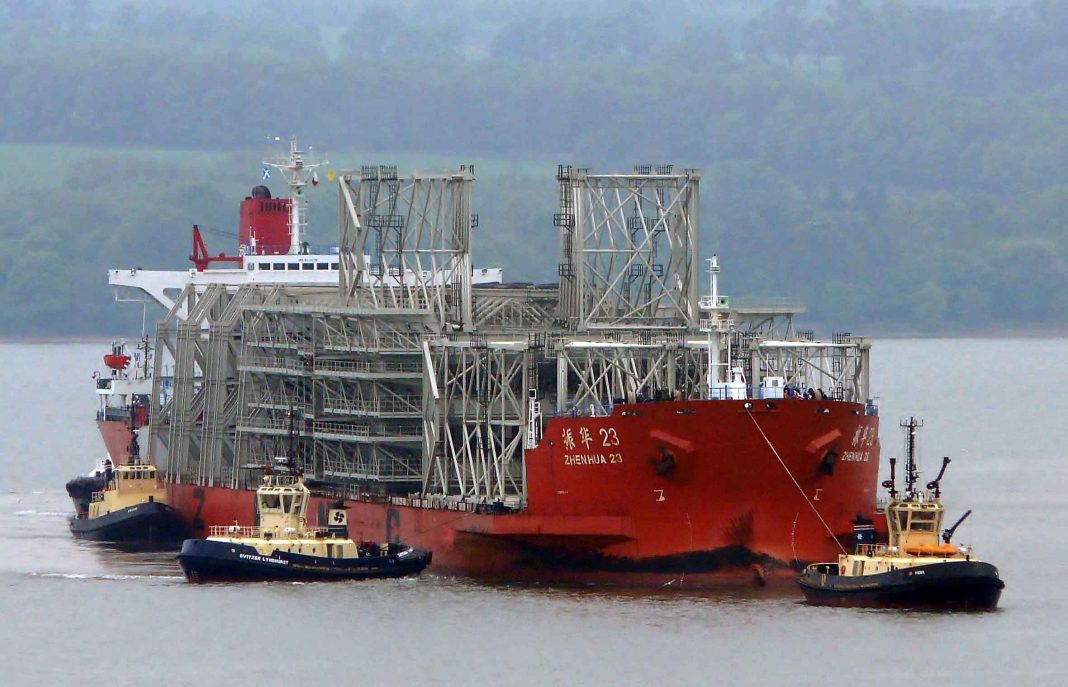The Queensferry Crossing, the new road bridge across the Firth of Forth, is due to open in May 2017. The unique bridge forms the centrepiece of a major upgrade to the cross-Forth transport corridor in the east of Scotland, with a Scottish Government investment of £1.35 billion.
The 1.7 mile structure will be the longest three-tower, cable-stayed bridge in the world and also by far the largest to feature cables which cross mid-span.
During the construction process over the last few years, Queensferry on the Forth has been passed by a flotilla of small vessels darting back and forth from Rosyth. These are the vessels involved in the building of the bridge, a process which has involved the creation of a building site on water, consisting of barges containing cabins and stores.
The vessels also transport the workers, while workboats and tugs move equipment from the Rosyth site to the base of the three towers. A fleet of crew boats is used to get workers to where they need to be.
The structure will be 207m above high tide (683ft), 50m higher than the existing Forth Road Bridge, and 150,000 tonnes of concrete will be poured. The steel for the bridge deck weighs a total of 35,000 tonnes.
The combined steel required for the North and South viaducts weighs 7,000 tonnes. There will be 23,000 miles of cabling, and the work will involve 10 million man hours.
Among the many vessels involved in the day-to-day construction work are the tugs Carron (225gt), Forth Drummer (114gt), Tummel (218gt) and Hemiksem (323gt).
The crew vessels Linzi S, Fiona S, Nicola S, Tracey S and Forth Navigator have also been regularly used, along with workboats Morag M, Laura M and Sany M. The larger ships that brought steelwork to the site are illustrated.
Text and photos by Iain McGeachy
For the full article, see Ships Monthly, March 2017


